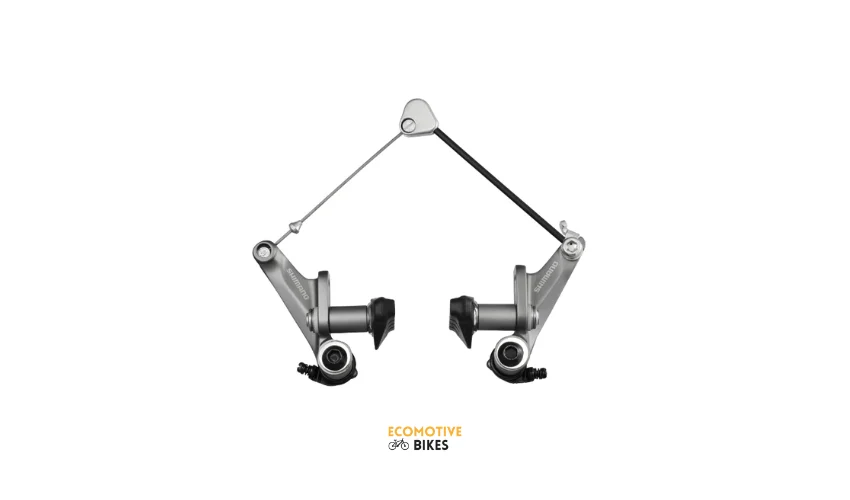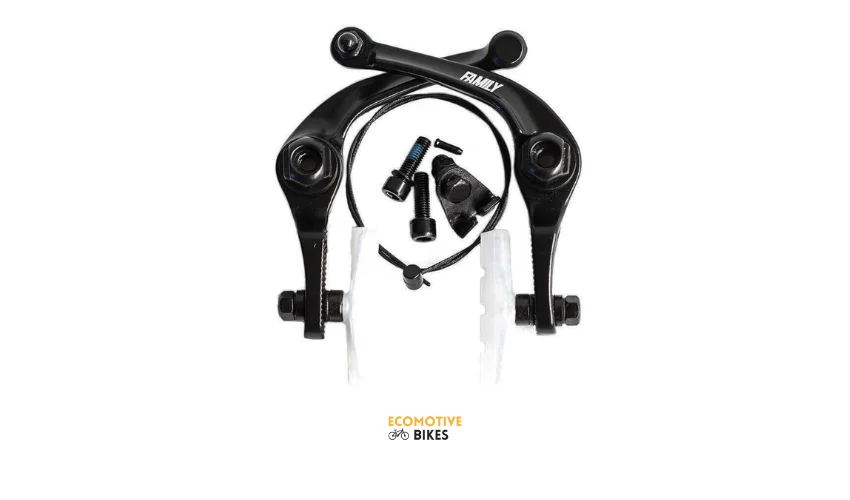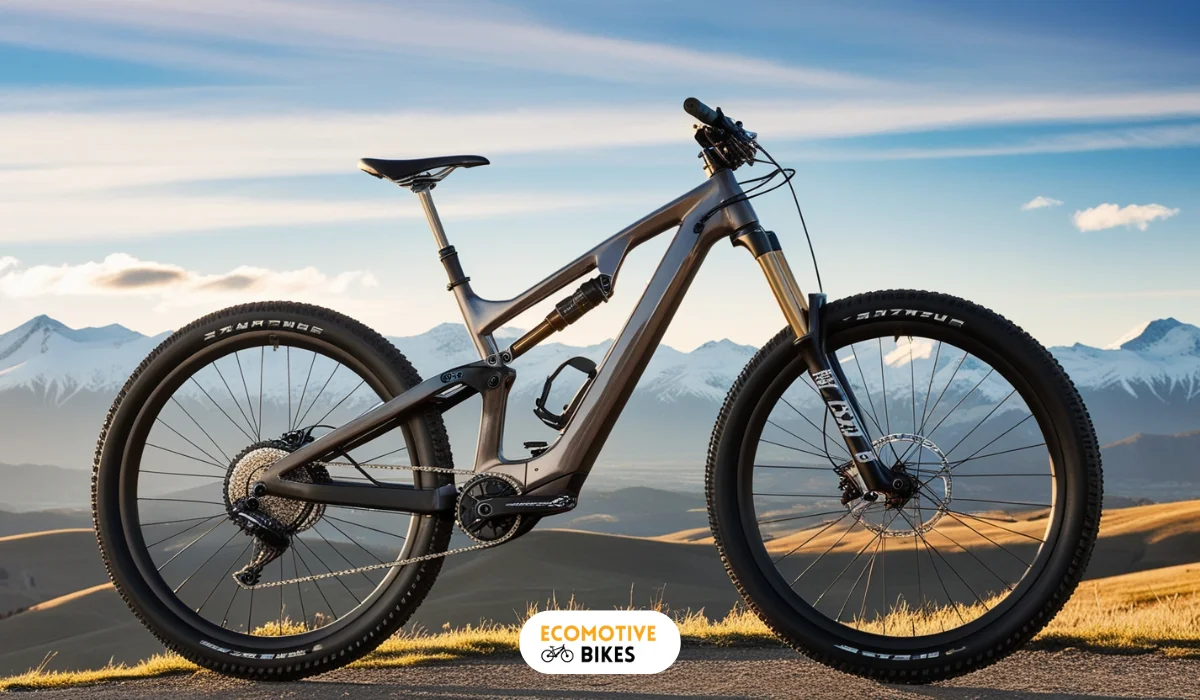What are the types of e-bike brakes?
Learn about the different types of e-bike brakes, including mechanical, hydraulic, and regenerative braking systems, to understand which is best for your ride.
Table of Contents
Related Articles:
The braking system is a key part of any e-bike, providing safety and control during your rides. When selecting an e-bike, it’s important to understand the types of e-bike brakes available and how they impact performance. Mechanical, hydraulic, and regenerative braking systems each offer unique advantages depending on your riding style and conditions.
The importance of brakes for e-bikes
As e-bikes continue to rise in popularity for both commuting and recreational purposes, ensuring a reliable braking system becomes even more critical. Due to the additional speed and weight of electric bicycles, having effective brakes is essential for rider safety and maintaining control, particularly in challenging situations or at higher speeds.

What are bicycle brakes?
Bicycle brakes are mechanical systems designed to reduce the speed of a bike or bring it to a complete stop by creating friction. When the rider pulls the brake lever, it triggers a mechanism that applies pressure to a moving part of the wheel, either at the rim or the hub, causing the bike to decelerate. The friction generated in this process converts kinetic energy into heat, which is how the bike slows down or stops.
For e-bikes, where higher speeds and greater mass are factors, brake efficiency is especially important. Proper braking systems help you control your speed, take corners safely, and stop effectively when necessary, all while handling the additional forces generated by electric motor assistance.
Types of e-bike brakes
Several braking systems are used on e-bikes, each offering specific advantages and catering to different riding styles and conditions. Below are the most common types:
1. Rim brakes
Rim brakes are one of the oldest and most common types of brakes found on bicycles, including some e-bikes. They work by pressing brake pads directly against the sides of the wheel’s rim to create friction, which slows the bike down.
- How rim brakes work: The rider pulls the brake lever, which engages a cable connected to brake calipers. These calipers hold the brake pads, which clamp down on the wheel’s rim, causing the bike to slow down.
- Key components:
- Brake lever
- Brake cable
- Brake calipers
- Brake pads

Advantages:
- Lightweight and simple in design.
- Affordable and widely available.
- Easy to maintain with basic tools.
Disadvantages:
- Performance is reduced in wet or muddy conditions, as water can reduce the friction between the pads and the rim.
- Over time, rim brakes can wear down the wheel’s rim.
- Less effective on heavier e-bikes or at high speeds, where stronger braking is needed.
Types of rim brakes
Rim brakes come in various styles, each with its own advantages and best-use cases. Here’s a look at some of the most common types:
1. 1. Cantilever Brakes
Cantilever brakes feature two brake arms, each mounted to its own pivot point on opposite sides of the bike’s fork or frame. When the brake lever is pulled, these arms come together, pressing brake pads against the wheel rim to create friction and slow the bike. Cantilever brakes have a wider space between the brake mounts and the pads, making them a great choice for bikes with fat tires, such as mountain bikes.

How cantilever brakes work: A straddle cable connects the two brake arms and moves vertically when the brake lever is engaged, causing the arms to pivot and press the brake pads against the rim. This system gives the brakes strong stopping power without being easily clogged by mud, which is why cyclocross riders often prefer them.
Advantages:
- Good for wider tires, making them ideal for off-road or mountain biking.
- Resistant to mud build-up.
- Quick and easy to replace brake pads, often with cartridge-style pads.
Disadvantages:
- Can be tricky to assemble and adjust. Both arms must come together evenly to apply proper pressure to the brake pads. If one arm slips, the brake pad may move below the rim, leading to reduced braking efficiency or failure.
- Fine-tuning the alignment of brake shoes can be challenging.
1. 2. Caliper Brakes
Caliper brakes are a classic and widely-used brake system, especially on road bikes and kids’ bikes. These brakes operate by clamping down on the wheel’s metal rim. The brake arms are attached at a single point above the tire, forming a “caliper” shape that squeezes the pads onto the rim when the brake lever is pulled.

How caliper brakes work: The caliper arms are activated by a brake cable, pulling the arms inward to press the brake pads against the rim. This system is efficient for bikes with narrow tires and is commonly found on road bikes because it provides effective braking without adding too much weight.
Advantages of caliper brakes:
- Durable and stylish, caliper brakes are simple to use and maintain.
- Offer strong braking performance in dry conditions.
- Lightweight, making them a popular choice for road cyclists.
Disadvantages of caliper brakes:
- Caliper brakes have less stopping power when used with larger tires, making them less effective for mountain bikes or e-bikes with wider wheels.
- They may not perform as well in wet or muddy conditions compared to other brake types like disc or V-brakes.
1. 3. V-Brakes for electric bikes
V-brakes, also known as linear-pull or direct-pull brakes, are a type of cantilever brake but with longer arms. They are typically found on mountain e-bikes and off-road bicycles due to their powerful stopping ability, even in wet or muddy conditions. The design involves brake arms that pull directly from the sides of the wheel, applying strong braking force.

How V-brakes work: V-brakes are mounted to the same points on the frame or fork as cantilever brakes but feature longer arms that increase leverage. When the brake lever is pulled, the arms squeeze the brake pads against the rim, slowing the bike down.
Advantages:
- Excellent for off-road and all-weather conditions due to their strong braking power.
- Provide better control in muddy or wet environments compared to other rim brakes.
- Simple to maintain and adjust with basic tools.
Disadvantages:
- Heavier than cantilever and caliper brakes, which can add some weight to the bike.
- Friction between the brakes and the wheel rim can sometimes be a problem, particularly after a flat tire repair or when the bike is transported.
1. 4. U-brakes for e-bikes
U-brakes have two pivot arms mounted directly onto the bike’s frame or fork, differing from caliper brakes, which are attached at a single point. The U-brake’s pivot points are located above the rim, and its design is common on BMX bikes and older mountain bikes.

How U-brakes work: When the brake lever is activated, the U-brake’s arms squeeze the brake pads against the rim. Over time, the brake pads may strike higher on the rim as they wear down, potentially coming into contact with the tire itself.
Advantages:
- Simple to fix and replace when needed.
- Effective for bikes with narrower tires, like BMX or freestyle bikes.
Disadvantages:
- As the brake pads wear out, they tend to hit the rim higher, which can damage the tire if not monitored and adjusted regularly.
2. Disc brakes
Disc brakes are a modern and more powerful alternative to rim brakes, particularly popular on e-bikes. Instead of applying pressure to the rim, disc brakes squeeze brake pads against a metal disc (rotor) attached to the wheel hub.

There are two types of disc brakes commonly used:
- Mechanical Disc Brakes: These operate with a cable that pulls the brake calipers, which in turn push the brake pads against the rotor.
- Hydraulic Disc Brakes: In hydraulic systems, the braking force is transmitted through a fluid-filled line, offering more powerful and consistent braking with less effort at the lever.
How disk brakes work: When the brake lever is pulled, it activates a caliper that presses brake pads against the rotor, slowing the rotation of the wheel. The hydraulic system provides smoother operation and more precise control than mechanical systems.
Advantages:
- Strong, consistent braking performance in all weather conditions, especially in wet or muddy environments.
- Less wear and tear on the rims, since braking occurs at the rotor.
- Better heat dissipation, reducing the chance of brake fade during long descents or heavy braking.
Disadvantages:
- More expensive than rim brakes, particularly for hydraulic systems.
- Hydraulic disc brakes can be more challenging to maintain due to their complexity, although they require less frequent adjustment than mechanical disc brakes.
- Heavier than rim brakes, which can slightly impact the overall weight of the bike.
3. Drum brakes
Drum brakes, while not as common as rim or disc brakes, can be found on certain types of e-bikes, especially models designed for urban commuting or heavy utility use. Unlike rim and disc brakes, drum brakes are enclosed within the wheel hub, providing a high level of protection against dirt and moisture.

How drum brakes work: Inside the wheel hub, there are two curved brake shoes lined with friction material. When the rider engages the brake lever, these shoes are pushed outward against the inner surface of the drum, creating friction that slows the wheel. The enclosed design makes them well-suited for riding in wet and muddy conditions.
Advantages:
- Very durable and long-lasting, thanks to their enclosed design that protects internal components from debris.
- Requires minimal maintenance compared to other types of brakes.
- Perform reliably in wet and dirty conditions due to the enclosed system.
Disadvantages:
- Heavier than both rim and disc brakes, which can affect overall bike weight.
- Offer less precise modulation and responsiveness compared to disc brakes.
- Poor heat dissipation, which can cause brake fade after long, sustained braking.
4. Regenerative brakes
A feature unique to e-bikes, regenerative braking is an innovative system that not only helps slow the bike but also recovers energy and channels it back into the battery. When the rider brakes, the electric motor switches into reverse mode, acting as a generator to recover energy that would otherwise be lost as heat.

How regenerative brakes work: When the rider either applies the brakes or releases the throttle, the motor switches into generator mode. This reverses the motor’s function, converting the kinetic energy from the bike’s motion back into electrical energy. The recovered energy is stored in the battery, extending its range.
Advantages:
- Helps recharge the battery during braking, extending the bike’s range.
- Reduces the amount of wear on conventional braking systems, as less pressure is placed on mechanical components.
- Environmentally friendly, as it reuses energy that would otherwise be wasted.
Disadvantages:
- Less effective at lower speeds, where not much energy is available to regenerate.
- May not provide sufficient stopping power on steep descents or in emergency braking situations, so it is usually paired with another brake type.
- Adds complexity to the e-bike’s electrical system, potentially increasing cost and maintenance requirements.
Faq’s: Types of electric bike brakes
What are the different types of e-bike brakes?
E-bike brakes generally fall into two categories: mechanical and hydraulic. Mechanical disc brakes use a cable to activate the brake, while hydraulic disc brakes use fluid for better modulation and stopping power. Some e-bikes may also have regenerative braking that charges the battery while slowing down.
What are the different styles of bike brakes?
Bike brakes come in various styles, including rim brakes like V-brakes and caliper brakes, and disc brakes (mechanical and hydraulic). Rim brakes grip the wheel’s rim to stop, while disc brakes apply force to a rotor attached to the wheel hub, offering more reliable performance in varied conditions.
What are the three types of brakes?
The three main types of bike brakes are rim brakes, disc brakes, and drum brakes. Rim brakes (such as V-brakes) are lighter but less effective in wet conditions. Disc brakes (mechanical or hydraulic) provide superior braking power, and drum brakes are less common but offer consistent performance.
How many types of electric braking systems are there?
There are two main types of electric braking systems: regenerative braking and dynamic braking. Regenerative braking recovers energy during braking to recharge the battery, while dynamic braking dissipates excess energy as heat to slow down the vehicle without recharging the battery.
Conclusion: Types of e-bike brakes
Choosing the right type of e-bike brakes can make a big difference in your riding experience. Mechanical brakes are simple and affordable, while hydraulic brakes provide stronger stopping power and smoother operation. Regenerative braking, though less common, adds an extra level of efficiency by recovering energy. Knowing the strengths of each type will help you pick the right e-bike for your needs.





